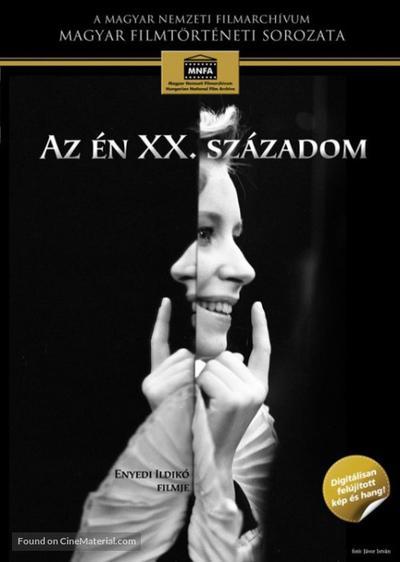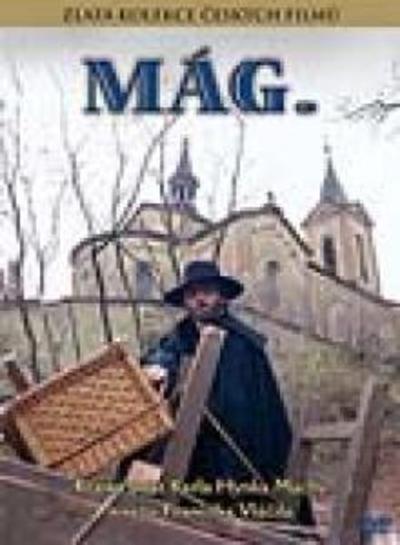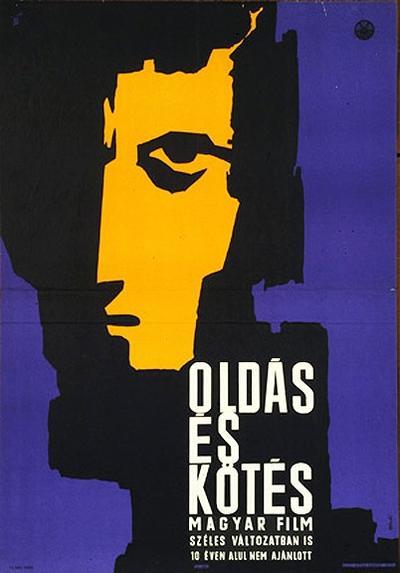Synopsis:
Dorothy Segda essays three roles in the Hungarian-made My 20th Century. The film begins with the birth of twin girls to a Budapest mother (Dorothy Segda) in 1880. Orphaned early on, the girls are forced to sell matches on the streets until both are adopted by two separate families. Flash forward to 1900: Having lost track of one another, the grown-up twins take separate compartments on the Orient Express. One of the girls (Segda again) has become the pampered mistress of a wealthy man; the other (Segda yet again) is a bomb-wielding anarchist. Director Ildiko Enyedi evidently intended My 20th Century as an allegorical statement concerning the status of women in the modern mechanical age. The experiences of the twins are interspersed with shots of Thomas Edison (Peter Andorai), whom we see at the beginning of the film perfecting his incandescent light bulb on the very day that the sisters are born. The more technological advances made by Edison, the more confused the twins become in establishing their own roles in an advancing civilization. Adroitly avoiding cut-and-dried symbolism, Ildiko Enyedi keeps the audience wondering what she’s up to by including such surrealistic vignettes as a caged chimpanzee recounting the day of his capture!Read More »
Hungary
-
Ildikó Enyedi – Az én XX. századom AKA My Twentieth Century [+extra] (1989)
1981-1990ArthouseDramaHungaryIldikó Enyedi -
Béla Tarr – A Torinói ló AKA The Turin Horse (2011) (HD)
2011-2020ArthouseBéla TarrDramaHungarySYNOPSIS:
1889.
German philosopher Friedrich Nietzsche witnessed the whipping of a horse while travelling in Turin, Italy. He tossed his arms around the horse’s neck to protect it then collapsed to the ground. In less than one month, Nietzsche would be diagnosed with a serious mental illness that would make him bed-ridden and speechless for the next eleven years until his death. But whatever did happen to the horse? This film, which is Tarr’s last, follows up this question in a fictionalized story of what occurred. The man who whipped the horse is a rural farmer who makes his living taking on carting jobs into the city with his horse-drawn cart. The horse is old and in very poor health, but does its best to obey its master’s commands. The farmer and his daughter must come to the understanding that it will be unable to go on sustaining their livelihoods. The dying of the horse is the foundation of this tragic tale.Read More » -
Frantisek Vlácil – Mág (1987)
1981-1990ArthouseDramaFrantisek VlácilHungaryIMDB Review
This movie is the very last opus of a great Czech director Frantisek Vlácil(1924-1999; Markéta Lazarová, Valley of the Bees, Concert at the End of Summer) and it’s truly his masterpiece.In a breathtaking way it narrates some episodes from the life of possibly the most famous Czech poet Karel Hynek Mácha (1810-1836). Actually the title of the film “Mág” may have two meanings, the first one (a mage) refers to the talent of the deeply romantic Mácha (played by outstanding Jirí Schwarz), the second one is the contemporary transcription of Mácha’s most famous poem Máj (May).Read More »
-
László Nemes – Saul fia AKA Son of Saul (2015)
2011-2020DramaHungaryLászló NemesQuote:
Two days in the life of Saul Auslander, Hungarian prisoner working as a member of the Sonderkommando at one of the Auschwitz Crematoriums who, to bury the corpse of a boy he takes for his son, tries to carry out his impossible deed: salvage the body and find a rabbi to bury it. While the Sonderkommando is to be liquidated at any moment, Saul turns away of the living and their plans of rebellion to save the remains of a son he never took care of when he was still alive.Read More » -
Gábor Bódy – Kutya éji dala AKA The Dog’s Night Song (1983)
1981-1990CultExperimentalGábor BódyHungaryIn a story that hops around a little, a priest arrives in a village to go from person to person offering his own form of consolation or advice. On his list of “clients” is a former Communist Party official who is now wheelchair-bound because of a sniper’s bullet during the 1956 uprising; a woman dying of tuberculosis; an astronomer who sings with a punk rock group; a woman who leaves her soldier-husband to work in a nightclub; and their son. As these people suffer through personal travails, a surprise is in store for everyone — the priest is not exactly who he seems to be.Read More »
-
Miklós Jancsó – Oldás és kötés AKA Cantata (1963)
1961-1970ArthouseDramaHungaryMiklós JancsóQuote:
Jancsó’s second feature film, received the Hungarian Critics’ Prize. In this work, influenced by Michelangelo Antonioni, Jancsó created the unique visual style by which he became known – the mesmerizing, sweeping, ballet-like camera movement, which emphasize the relation between the characters and the landscape, the vast Hungarian plain, around them. In considering the latter aspect, Jancsó’s cinematic world has connections with the traditional western, although not on the ideological level. Movement is for Jancsó both a guiding philosophical and aesthetical principle – “Is seems to me that life is a continual movement,” he once summarized. “It’s physical and it’s also philosophical: the contradiction is founded on movement, the movement of ideas, the movement of masses.”Read More » -
Miklós Szinetár – Az ember tragédiája AKA The Tragedy of Man (1969)
2011-2020AnimationDramaHungaryMarcell JankovicsQuote:
“The Tragedy of Man (Hungarian: Az ember tragédiája) written by Imre Madách was first published in 1861. The play is considered one of the major works in Hungarian literature and has earned a place in the national consciousness in that it is not only performed regularly in Hungary today but dialogue from the piece is often quoted and referred to.Starting with the expulsion from the Garden of Eden, the three main characters; Adam, Eve and Lucifer travels through history, playing their roles, from Ancient Egypt through the nineteenth century, into a distant and uncertain future. In each era the merits of the human race are presented by Adam, who believes in mankind and human achievement. But it is Lucifer, as the role of his servant or confidant, who exposes his dreams as ones built on injustice and misery.
Eve appears often as a temporary restorative for Adams disappointment in the failures of mankind.Read More » -
György Pálfi – Szabadesés AKA Free Fall (2014)
2011-2020ExperimentalGyörgy PálfiHungaryMysterySeven floors, seven identically built apartments yet completely different worlds. Seven situations, seven different stories that are nevertheless tied together by thousand strings. They are absurd, often times mysterious mocking glasses of reality as we know it. Like images of an exhibition, these stories are authentic per se, created in different styles and genres, thus told in different ways. It is exactly this diversity that organizes these stories into one peculiar tale.Read More »
-
Kristina Grozeva & Petar Valchanov – Urok AKA The Lesson (2014)
2011-2020DramaHungaryKristina Grozeva and Petar ValchanovIn a small Bulgarian town, Nade is an honest, hard-working elementary school teacher and devoted mother, struggling to keep her life together. Her unemployed, alcoholic husband has secretly spent their mortgage payments on booze, the agency where she translates legal documents for extra cash is going under, and a thief in her class has stolen the last of her money out of her purse. With few options left, Nade turns to a local loan shark for help, but with the reposession of her home looming, she finds herself with little hope. Resorting to measures her former self would have found depraved, Nade attempts one last desperate act to get the money she needs.Read More »









